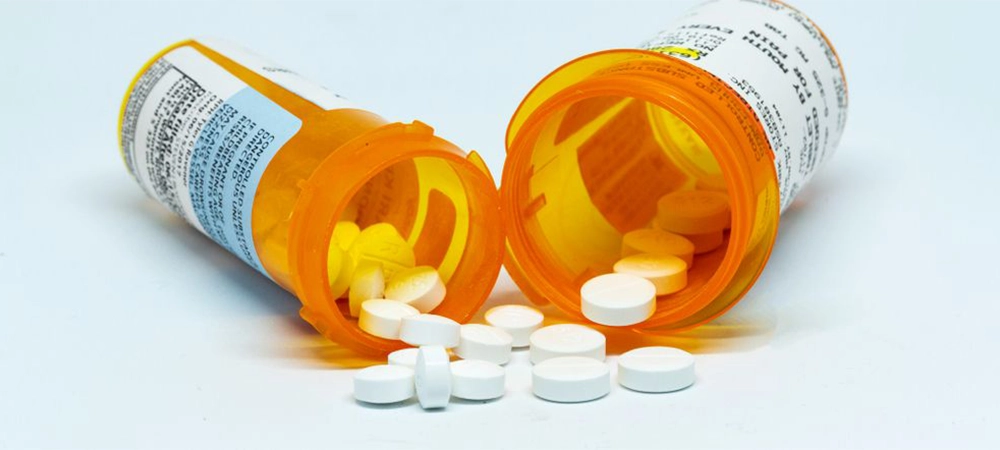Canada is the 2nd largest per capita consumer of prescription opioids worldwide, and OxyContin is one of the most popular opioid medications. With an increasing prescription and addiction rate of this drug, inquiring ‘how does it feel to be on OxyContin’ has become a commonly asked question in the country.
Before we dive into answering this question, let’s learn a bit about the substance and why people take it.
What is OxyContin?
OxyContin is an opioid painkiller. In Canada, you can only legally have this drug if you have your doctor’s prescription because it is considered a Schedule II controlled substance. This implies that there’s a high chance that people can abuse or get addicted to the substance.
Oxycodone is a substance that is often linked with OxyContin, and it is majorly available in 2 different forms: immediate-release as well as the extended-release forms of the drug. Simply put, Immediate-release means the effects of the drug are felt just about immediately. On the other hand, extended-release means the substance produces its effects slowly within a few hours.
While oxycodone’s immediate-release form comes as a generic drug, the extended-release form is actually OxyContin.
OxyContin is often available as oral tablets that is safe to swallow but not inject.
Related article: What is Stronger Oxycodone or OxyContin
How Does OxyContin Work, and What are The Effects of OxyContin Use?
Oxycodone and OxyContin change how the brain reacts to pain. So, what does Oxy feel like? It binds to the brain’s opioid receptors and trigger the release of dopamine (a chemical that is often associated with the feeling of pleasure). Although these substances help patients feel less pain, repeated use of OxyContin (especially without a prescription) can damage the brain.
So, how exactly does it feel to be on OxyContin? The substance can create a euphoric high and opioid-induced feelings among patients that sum up as being happy.
If you swallow an OxyContin pill for the first time, you should experience no high because of its extended-release function. With patients experiencing severe pain, there could be a feeling of being high, just like when you take other opioids.
But the dangerous situation is when you chew, grind, crush, open or break an OxyContin tablet. Doing these affects the release time, thereby causing a rush of dopamine to the brain.

Why Do People Take OxyContin?
As we’ve established, OxyContin is an opioid analgesic. So, while it’s important to ask ‘how does it feel to take OxyContin,’ it’s also essential you know why it has become widespread.
Patients that battle with cancer, arthritis, and inflammation all experience mild to severe pain. Therefore, a doctor can prescribe the drug to such patients. The substance is also useful to people who don’t feel relieved after taking regular painkillers like aspirin and Tylenol.
What Does Controlled Release Mean?
One of the main reasons OxyContin is considered so addictive is because of the long-term effects it offers. The question of how does it feel to be on OxyContin, is usually derived because of people thinking that it provides that euphoric high they want.
Also, because of the time-release element, they don’t have to keep taking the drug to get the pain relief benefits. As a result, it is often used for cancer patients, and others who have chronic conditions.
The Abuse of OxyContin
Unfortunately, even though the drug offers a number of benefits, there are some who begin to abuse it, mainly because their body has become dependent on the effects it provides. Because it is a controlled release substance, the pain-relieving benefits last and last.
The euphoric state the substance provides is one that makes many people not only crave it, but also become addicted to it. After a long period of taking the drug, the body will become dependent on it, making it even more difficult to come off of.
What are the Risks of Getting High on OxyContin?
Different patients have unique accounts of what an OxyContin high feels like. On their first dosage, patients on OxyContin will generally feel pleasant and happy, asides from the relief that the substance provides. However, this first dosage offers the highest euphoric feeling that they can get from the drug. With a decline in the high of subsequent dosages, some patients try to recreate the feelings of the first time they took the drug. This is known as ‘chasing the high.’
Some people figure out ways to replicate this feeling and even prolong its effects. For example, people add alcohol to the crushed tablets and inject the mixture. This is a dangerous practice that can cause the brain to adjust to the altered dopamine level. In turn, this can affect its structure, damage it and cause addiction.
Another risk involved with OxyContin and Oxycodone high arises when people take to snorting it. Since the opioid painkiller is broken into smaller forms to snort, the substance can pose life-threatening effects like:
- Severe headache
- Nose bleeds
- Lung infections
- Abdominal pain
- Unconsciousness
- Mouth and nose sores
- Pneumonia, etc.
Furthermore, overdosing on OxyContin can also be harmful to you or your loved ones.
How to Get Help With OxyContin Addiction?

Patients can unknowingly get hooked on OxyContin. If you or your loved one become addicted to the substance, then the first thing to do is seek professional help. In Canada’s largest cities, public and private rehabilitation centers are available for people who don’t want to be addicted to the substance. You or your loved ones will get treatment programs like professional detox, music therapy, individual counseling, and life management courses at these centers.
If you discover that you or your loved one has become addicted to OxyContin, you should also inform your doctor. That way, they won’ continue prescribing the very drug’s addiction you’re trying to overcome.
FAQs About Using OxyContin
Below are answers to some commonly asked questions:
How long do the effects of OxyContin last in the body?
From the time of ingestion, a dose of OxyContin works for about 12 hours in the body. It can be detected after 24 hours in the blood and after four days in urine.
How often should you take OxyContin tablets to relieve pain?
Generally, you should take OxyContin tablets twice daily. However, your doctor is in the best position to recommend the dosage that works best for you. OxyContin comes in 10, 12, 20, 30, 40, 60, and 80 mg tablets.
What are the side effects of OxyContin?
The side effects of OxyContin that patients often experience include:
- Dizziness and drowsiness
- Nausea
- Headaches
Seek your doctor’s advice if you notice any of the following symptoms.
What are the symptoms of OxyContin and Oxycodone abuse?
Patients that don’t follow their doctor’s prescription or obtain OxyContin illegally are at a higher risk of overdosing on the opioid. Generally, these patients can experience the following signs:
- Dilated pupils
- Short attention span
- Apathy
- Unusual calmness
- Sedation
In conclusion
OxyContin abuse and addiction is a menace in Canada. The substance has some benefits but can also affect how patients react to pain and the general working of their brains.
If you or your loved ones become dependent on the prescription drug, seek medical help from an addiction rehabilitation center in Ontario immediately.
Related article: How Much Does a Drug Addiction Rehab Cost in Canada?






